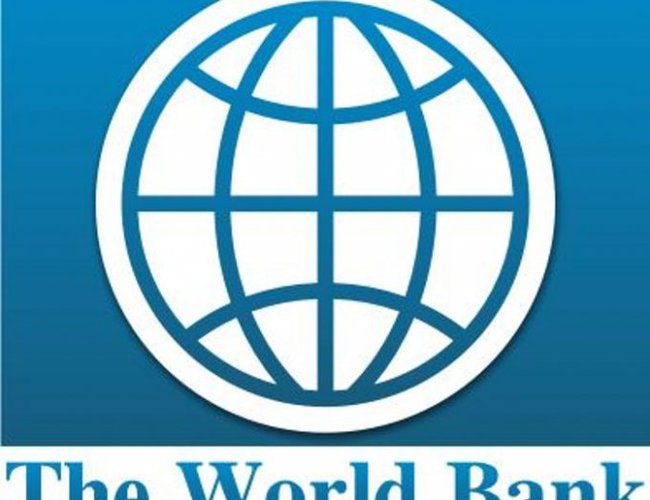
The forecast of Nepal’s economic growth in FY2018 remains unchanged at 4.6 percent and is expected to average 4.3 percent in the subsequent two years, according to the latest edition of the World Bank’s twice-yearly Nepal Development Update released today. The key challenge during this period will be managing both fiscal and current account deficits, which are likely to increase substantially as Nepal transitions to federalism, it says.
Agriculture, which was expected to progress well in FY2018, was set back by floods and sub-par rainfall in the winter crop season. It is expected to rebound thereafter, but in line with its historical average growth rate as no major irrigation projects are expected to be completed during the forecast period, according to the update. The service sector, particularly trade, tourism and transport, is expected to continue driving growth but is likely to be affected by uncertainty stemming from a further slowdown in remittances, it says.
Industry is likely to continue getting a boost in FY2018, as the construction subsectors continue to perform well. Reconstruction activities are expected to continue to pick up at a relatively faster pace in the remainder of FY2018 and are expected to grow during the forecast period. Manufacturing is also expected to pick up due to better availability of electricity and improving prospects for export to India.
Meanwhile, the current account deficit, which was marginal in FY2017, is expected to widen substantially as the growth of imports remains strong while remittances ease and exports grow modestly. The persistence of a large current account will likely put pressure on Nepal’s currently adequate foreign exchange reserves.
“The decline in migrant worker outflow has continued; growth of remittances has significantly slowed over the last two years; and further slowdown could result in a sharper deterioration in the balance of payments,” said Sudyumna Dahal, Economist and co-author of the update. “In addition to the external sector, slower growth of remittances could further slow accumulation of deposits in the financial sector,” he added.
With increased government expenditure the fiscal deficit is expected to widen in FY2018 and during the forecast period. Financing is not expected be a challenge due to ample fiscal space and a low debt-to-GDP ratio of 27.0 percent in FY2017. Debt is likely to grow relatively faster but remain sustainable during the forecast period.
In its Special Focus section, the update notes that at the fiscal deficit had already reached 4 percent of GDP in FY2017 owing, in large part, to hikes in civil service wages, pensions and social security spending. Thus, fiscal pressures had mounted even before the transition costs of federalism were considered.
“The cost of establishing and running a federal system of government, the need for post-earthquake and flood reconstruction, higher spending on social assistance programs, and larger outlays on much-needed infrastructure are likely to result in significant increases in government spending,” said Damir Cosic, Senior Country Economist and lead author of the update. “In addition, improving human resource capacity in the newly created subnational governments remains a critical priority,” he said.
Based on a number of critical assumptions, the update estimates the transition costs of restructuring the government at 3-4 percent of GDP per year over the next four years. The first assumption is that the consolidated wage bill of the overall government will not change significantly. A second assumption is that spending by subnational governments, and fiscal transfers financing this spending, will grow gradually as the capacity of local and provincial government increases. The third assumption is that one-off establishment costs of subnational governments will account for the bulk of additional spending needed. Should any of these assumptions not materialize, the estimates could be radically different, notes the update. If not addressed adequately, the increased spending needs could lead to fiscal vulnerabilities in the future, it says.
The government has carried out considerable preparatory work for the transition to a federal structure, particularly on three thematic areas—fiscal, administrative, and functional restructuring. However, a comprehensive transition plan and a responsible authority to oversee the transition are needed, says the update.
“In the absence of a clear transition management plan, the implementation of the federal constitution in terms of devolution of functions, funds and functionaries will be neither smooth nor well sequenced,” said Cosic. “To ensure that state restructuring is a success, a credible plan that is executed efficiently is really important,” he said.
To successfully transition to the new government structure, authorities should (a) eliminate wasteful or duplicative spending, (b) improve efficiency of spending to reach the greatest number of neediest citizens, and (c) adopt and implement a credible plan to transition to federalism, concludes the update.
According to a press release issued by the bank,the World Bank Group (WBG) fielded its first economic mission to Nepal in 1963 to assess the country’s development prospects and challenges. It approved its first credit in 1969 for a telecommunications project. Since then, the World Bank has provided Nepal $4.75 billion in assistance ($3.48 billion in credits and $1.27 billion in grants). Nepal is eligible for concessional financing support from the World Bank’s International Development Association (IDA). During the IDA17 period (17th replenishment of IDA covering FY2015-2017), the World Bank committed $1.2 billion. This amount included additional financing of $300 million from the IDA Crisis Response Window to respond to the emergency needs after the 2015 earthquake. During IDA18 period (FY2018-2020), Nepal may access approximately $1.3 billion in IDA financing. This includes additional financing from the IDA Exceptional Risk Mitigation Regime financing window. The current portfolio comprises 22 active projects with a net commitment of $2.32 billion. In terms of the number of projects, the energy sector makes up the largest share (5 projects) followed by agriculture and education (4 projects in each sector).
- Japan Hands Over The Community Center For Disaster Prevention
- Apr 23, 2024
- Hanuman Jayanti 2024:Ritual And Significance
- Apr 23, 2024
- Upper Arun And Dudhkoshi Hydropower Projects Will Use TBM, With Parallel Construction Of Other Infrastructure: MD Ghising
- Apr 23, 2024
- Weather Forecast: Brief Rain And Thunder Showers Is Likely At Few Places Of Gandaki, Sudurpaschim And Karnali
- Apr 23, 2024
- Madhu Kumar Marasini Has Been Appointed As The New Finance Secretary
- Apr 22, 2024
















